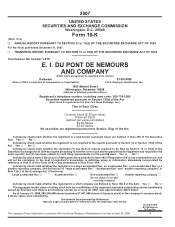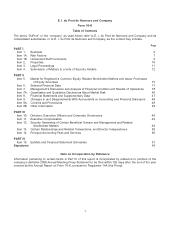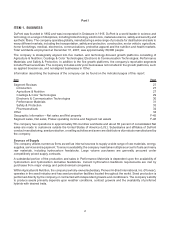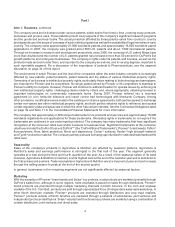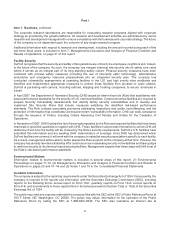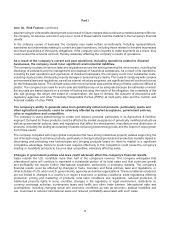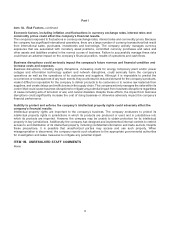DuPont 2007 Annual Report Download - page 4
Download and view the complete annual report
Please find page 4 of the 2007 DuPont annual report below. You can navigate through the pages in the report by either clicking on the pages listed below, or by using the keyword search tool below to find specific information within the annual report.
Part I
ITEM 1. BUSINESS
DuPont was founded in 1802 and was incorporated in Delaware in 1915. DuPont is a world leader in science and
technology in a range of disciplines, including biotechnology, electronics, materials science, safety and security and
synthetic fibers. The company operates globally, manufacturing a wide range of products for distribution and sale to
many different markets, including the transportation, safety and protection, construction, motor vehicle, agriculture,
home furnishings, medical, electronics, communications, protective apparel and the nutrition and health markets.
Total worldwide employment at December 31, 2007, was approximately 60,000 people.
The company is strategically aligned into five market- and technology-focused growth platforms consisting of
Agriculture & Nutrition; Coatings & Color Technologies; Electronic & Communication Technologies; Performance
Materials; and Safety & Protection. In addition to the five growth platforms, the company’s reportable segments
include Pharmaceuticals. The company includes embryonic businesses not included in the growth platforms, such
as applied biosciences, and nonaligned businesses in Other.
Information describing the business of the company can be found on the indicated pages of this report:
Item Page
Segment Reviews 27
Introduction 27
Agriculture & Nutrition 27
Coatings & Color Technologies 29
Electronic & Communication Technologies 30
Performance Materials 31
Safety & Protection 33
Pharmaceuticals 34
Other 34
Geographic Information – Net sales and Net property F-45
Segment sales, Net sales, Pretax operating income and Segment net assets F-46
The company has operations in approximately 80 countries worldwide and about 60 percent of consolidated Net
sales are made to customers outside the United States of America (U.S.). Subsidiaries and affiliates of DuPont
conduct manufacturing, seed production, or selling activities and some are distributors of products manufactured by
the company.
Sources of Supply
The company utilizes numerous firms as well as internal sources to supply a wide range of raw materials, energy,
supplies, services and equipment. To ensure availability, the company maintains multiple sources for fuels and many
raw materials, including hydrocarbon feedstocks. Large volume purchases are generally procured under
competitively priced supply contracts.
A substantial portion of the production and sales in Performance Materials is dependent upon the availability of
hydrocarbon and hydrocarbon derivative feedstocks. Current hydrocarbon feedstock requirements are met by
purchases from major energy and petrochemical companies.
Within Agriculture & Nutrition, the company’s wholly-ownedsubsidiary, Pioneer Hi-Bred International, Inc. (Pioneer),
operates in the seed industry and has seed production facilities located throughout the world. Seed production is
performed directly by the company or contracted with independent growers and conditioners. The company’s ability
to produce seeds primarily depends upon weather conditions, contract growers and the availability of preferred
hybrids with desired traits.
2

